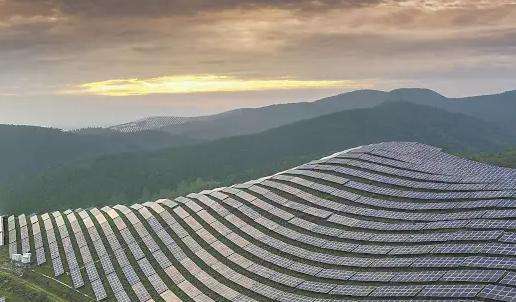1. Battery testing: Due to the randomness of battery cell production conditions, the performance of the produced batteries is not the same. Therefore, in order to effectively combine batteries with constant or similar performance. performance parameters must be classified; Battery testing is to classify the battery by testing its output parameters (current and voltage). In order to improve the utilization rate of batteries and manufacture qualified quality battery components.
2. Front welding: The bus strip is soldered to the main grid line on the front side of the battery (negative electrode). The bus strip is a tin-plated copper strip. the strip at several points. The shape is spot welded to the main grid line. The heat source used for welding is an infrared lamp (using the thermal effect of infrared rays). The length of the ruwelding ban is approximately twice the side length of the battery. The extra solder tape is connected to the back electrode of the next battery part during back welding. (Our company uses manual welding)
3. Back-end series connection: Back-end welding involves connecting 36 batteries together to form a chain of components. The process we currently use is manual. The positioning of the battery mainly depends. on a membrane plate with 36 grooves to place the battery cells. The size of the grooves corresponds to the size of the battery. The groove positions have been designed for components of different specifications. and The welding wire welds the front electrode (negative electrode) of the "front battery" to the rear electrode (positive electrode) of the "rear battery", thereby connecting the 36 parts together in series and the welding wires to the posit electrodesive and negative. of the component chain.
4. Laying the laminate: After the back side is connected in series and passed inspection, the component chains, glass and cut EVA, fiberglass and back board are laid according to certain levels and prepared for stratification. The glass is pre-coated with a layer of primer to increase the bonding strength between the glass and the EVA. When laying, ensure the relative position of the battery string, glass and other materials, and adjust the distance between batteries to establish a solid foundation for lamination. (Installation level: from bottom to top: glass, EVA, battery, EVA, fiberglass, backplane).
5. Component lamination: put the laid battery into the laminator, suck the air into the component, then heat to melt the EVA and connect the battery, glass and backplane together; components. The rolling processis a key step in the production of components. Lamination temperature and time are determined by the properties of the EVA. When we use fast curing EVA, the lamination cycle time is about 25 minutes. The curing temperature is 150°C.
6. Cutting: During rolling, EVA melts and solidifies outward due to pressure to form burrs, so it needs to be removed after rolling.
7. Framing: Similar to installing a frame on glass; Installing aluminum frames over glass components increases component strength, further seals battery components, and extends battery life. The gaps between the frame and the glass components are filled with silicone resin. Each image is connected to corner keys.
8. Solder Junction Box: Solder a box at the wire to the back of the component for easythe connection between the battery and other equipment or batteries.
9.High voltage test: High voltage test refers to applying a certain voltage between the component frame and the electrode wire to test voltage resistance and force insulation of the component to ensure that the component is not damaged in harsh natural conditions (lightning, etc.).
10. Component Testing: The purpose of testing is to calibrate the battery's power output, test its output characteristics, and determine the quality level of the component.














